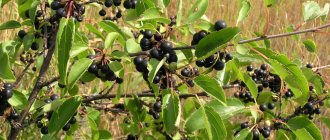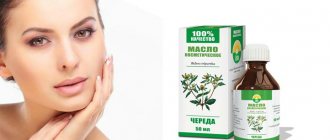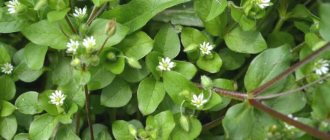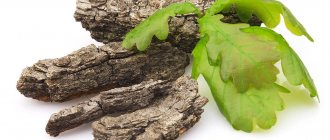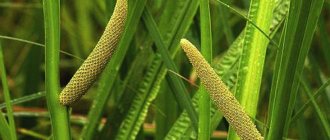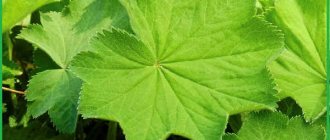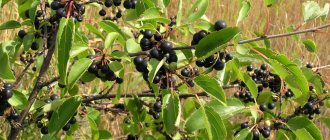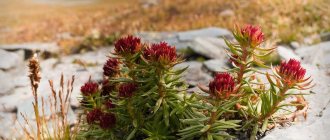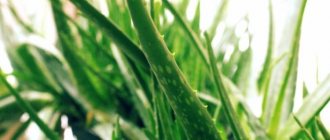Health
- Main features and medicinal properties
- Benefits and harms
- Useful tips
Aspen is a real decoration of a mixed forest. The tree pleases the eye with its thin form, and in the fall it amazes with the colors of its foliage. The plant can be found throughout Europe and in some Asian countries. People have a special relationship with this tree. In the old days, among the gypsies and residents of Romania, it was considered the most effective in the fight against mythical demons - vampires.
In the Christian religion, this tree is also considered special. According to scripture, it was from aspen that the cross on which Christ was crucified was made. There is an opinion that Judas committed suicide by hanging himself on an aspen tree. In addition to the mystical properties attributed to this tree, one cannot fail to note its special place in folk medicine. Aspen bark can alleviate and even heal a large number of ailments.
It is noteworthy that such properties have been scientifically confirmed after a number of medical studies.
Features of the cortex
Despite its relative unpretentiousness and ability to grow quickly, aspen does not “protect” its bark - it is rare that an adult tree retains it in a completely healthy state.
If young individuals have a smooth, light green or grayish trunk surface, and the resulting wood looks almost white with a slight shade of green, then as the tree matures, the bark cracks, becomes stained, darkens and peels off.
Botanical description of aspen
Common aspen is a tree that does not need any special introduction. This is a well-known deciduous tree with smooth, pleasant-to-the-touch gray bark; it grows virtually everywhere. On average, one aspen lives for almost 100 years, and it can grow up to 30 meters. Alas, aspen wood is susceptible to disease, so it is rare to find a healthy plant trunk.
It is easier to meet aspen in deciduous and mixed forests; it likes to grow next to oak and is adjacent to birch and pine. The formation of pure aspen forests is also possible. Aspen groves are not so rare in forest-steppe zones. The tree does not like dry areas.
The bark, buds and leaves are harvested for medicinal purposes. But still, it is the bark that has more pronounced medicinal properties than the other parts of the aspen. Raw materials need to be harvested in March, during the period when sap flow begins. The main thing is that it is an environmentally friendly area. The thickness of the bark for collection should be at least 5 mm, and it should be removed from healthy and young trees.
When collecting, the cuts are made very delicately, which do not damage the wood. So that the aspen tree can recover, small cuts are made. The best option is to remove the bark from a tree that grows in areas where it is planned to be cut down. Cut the collected raw materials into small pieces, dry them naturally, and pack them in linen bags.
How can such bark be useful?
Competent and caring Mother Nature has given man a wonderful opportunity - to use the entire arsenal of reserves accumulated in aspen bark for medicinal purposes. This is a valuable biological raw material for the preparation of medicinal decoctions, tinctures, cosmetics and skin care products.
Possessing a valuable chemical composition, herbal remedies based on aspen bark have a positive effect on the general condition of the body and correct various malfunctions in the functioning of organs and systems. Thus, the following therapeutic effects are known and in demand:
- choleretic;
- anti-inflammatory;
- hepatoprotective.
What does it contain?
Being a historical raw material for the production of such a famous medicine as aspirin, as well as taking part in the synthesis of the first antibiotics, aspen bark is rich in phenolic glycosides. This class of substances exhibits disinfectant activity, especially against infections of the respiratory tract and urinary system.
The presence of organic acids allows you to actively participate and normalize acid-base metabolism in the body, improve the processes of food absorption and remove decay products.
Aspen bark contains tannins that prevent rotting processes in it, thereby actively cleansing the intestines of waste and toxins.
There are large reserves of pectin (helps increase turgor), glycine betaine (a metabolite of choline in the body), flavonoids (physiological elements that play a role in metabolism, stimulating enzymatic activity).
What are the indications for use?
Aspen bark is a plant material often used for the preparation of herbal medicines. Traditional medicine and folk healers recognize its effectiveness in the treatment of arthritis and arthrosis, rheumatic changes in the body, kidney and bladder problems. It is often included in the treatment regimen for gastritis and gastroduodenitis.
It is useful to take drugs based on it for oncological diseases, as well as for the treatment of a number of venereological problems.
The bark has an antimicrobial and antiseptic effect on the tissues of the human body. That is why, with the help of the prepared products, you can help yourself cure gastrointestinal disorders, restore water-salt balance, and stabilize intestinal motor function. Solutions prepared from such raw materials can cope with furunculosis, carbunculosis and other skin diseases of a purulent-septic nature. Preparations from aspen bark are included in the treatment regimen for psoriasis, eczema, and parasitosis such as opisthorchiasis and giardiasis.
There is also evidence of the usefulness of including compositions based on aspen bark for the treatment of tuberculosis.
Reviews
If you listen to the opinion of experts, they believe that it is advisable to use aspen exclusively for preventive purposes or if there is a mild degree of helminthic infestation. But in no case should you be treated in this way if the infection is severe. This is especially true for a disease such as opisthorchiasis. Examples from clinical practice indicate that even potent medications are not always able to rid the patient of such a parasite, let alone folk remedies.
Although reviews from patients most often have a positive connotation:
“An ultrasound of the abdominal organs revealed an increase in the size of the liver, control tests confirmed invasion by opisthorchomas. The doctor prescribed the drug, but I decided to refuse it due to the large number of side effects. He began to treat himself with aspen bark. After the first course, a shrinkage of the liver and a partial decrease in the concentration of helminths were noted; after a second course, a complete cure occurred.”
Boris, 34
“Mom advised me to drink a decoction of the bark to get rid of Giardia. At first I was confident in this treatment, but after a while there was no improvement in my well-being, which was confirmed by control studies. As a result, I turned to an infectious disease specialist and underwent the drug therapy he prescribed.”
Ekaterina, 28
It is possible to be cured in this way, but to do this you need to know the parasite by sight. Certain tests that the doctor prescribes can help identify the culprit of the disease, and he also determines the treatment tactics. If you want to be treated with unconventional methods, you should first consult with a specialist.
How to properly prepare medicinal products?
Aspen bark for preparing medicines can be purchased at a pharmacy or prepared yourself. Its collection requires time and attention. Do not take areas affected by pests or overly dry scraps. It is desirable that the bark be of uniform thickness, not too dark and not crumble into powder.
Properly dried bark is the key to its effectiveness. A dry, shaded place with the possibility of ventilation is the optimal conditions for drying. It should be stored in glass or cardboard containers, away from heating appliances and home care products with strong chemical odors.
Cooking recipes. Decoction
Carefully sort the dried aspen bark, removing any impurities that may have accidentally fallen in, and grind it. Having measured out the amount of 1 glass, pour 600 ml of boiling water over it and put it on low heat until it boils lightly. After 20 minutes, remove the broth from the heat, allow it to cool naturally, and then strain.
This decoction is recommended to be taken three times a day for two months (a third of a glass). The course of treatment can be divided into two halves, with a break of a week after one month. It is prescribed for those suffering from kidney disease, diabetes, gastritis, and acute respiratory viral infections.
The effect of such a decoction can be enhanced by adding its leaves and buds to the aspen bark. You can mix in equal quantities or in a ratio of 2:1:1.
Then sore throats, acute tonsillitis, and cough will be added to the indications for use.
Reproduction
Aspen can be grown in the wild or in specialized nurseries. The tree can propagate by several methods: seeds and cuttings.
Seeds
Aspen reproduces very quickly. After flowering, the inflorescences turn into small boxes with seeds. After ripening, the seed box opens and the seeds fall into the ground or are carried by the wind. It should be noted that aspen seeds quickly lose their properties. If, after ripening, the seeds do not fall into the ground within 5-6 days, they die.
For the seed to germinate, it is enough to get into moist soil. However, fallen leaves or grass may appear in the path of the planting material. Therefore, of the large number of seeds that fall annually from a mature tree, only a few become young seedlings.
Therefore, in nurseries where aspen is grown, the soil near the plantings is plowed. This way the crop has a greater chance of producing young seedlings. Seedlings grown using seeds are weak and require greenhouse conditions. Therefore, the method of propagation by root shoots is used very often.
Root shoots
Most often, the plant reproduces by root shoots. A root from an adult tree can produce several fresh shoots at the same time. It should be noted that the young tree may be at a great distance from the mother crop.
In order to transplant such a seedling, it is necessary to perform the following algorithm of actions:
- Using a shovel, carefully clear the soil near the tree. This is done in order to identify the maternal root shoot. The maternal shoot will have the appearance of a thick root, from which a young tree with its own root system emerges.
- Carefully cut off the seedling at a distance of at least 30 cm from the mother. It is not recommended to dig up seedlings that grow too close to the tree. This may harm the mature plant.
- Dig up the seedling along with the soil and transplant it to a new location. It is recommended to treat the area of the mother root with garden varnish.
Aspen can produce several seedlings from one root shoot. They will all grow at a short distance from each other.
About preparing the tincture
Many people believe that tincture is a more effective and efficient treatment. However, do not forget that, as a drug prepared with alcohol, it has a list of contraindications, especially for people suffering from hypertension, ulcerative colitis, as well as pregnant and nursing mothers.
If there are no contraindications, the tincture is prepared as follows:
The crushed bark (5 tablespoons) is poured with half a liter of industrial vodka, sealed tightly and put in a cool, dark place. The liquid must be shaken daily, allowing the layers to mix. After 14 days, the aspen bark tincture is ready for use. Usually one dessert spoon is prescribed one hour before meals.
With the help of tincture, it is advisable to supplement the basic treatment regimen for gastrointestinal disorders, diseases of the respiratory tree, bile ducts and inflammation of joint tissue, as well as speed up the process of getting rid of helminths.
Climatic conditions
In order for aspen to feel good, climatic conditions must be met. You can find aspen in mixed deciduous forests. However, there are often isolated forest plantations consisting only of aspen trees. The tree usually grows in open areas. If a massive tree is located nearby, the aspen dies.
Pines and spruces often appear among the aspens. In the first years, aspen acts as a kind of cover for conifers. But gradually, when the trees become taller than the aspen, they shade it, and the tree loses its external characteristics and dies.
Ointment and more...
The healing properties of aspen bark are not limited to internal use. Local application to the skin is also effective. For this purpose, ointments, creams, balms, cream-balms, antiseptic lotions, skin cleansing and hair strengthening products are prepared.
To prepare them, take a decoction or infusion of aspen bark, mix it in half with any fat or vaseline base and achieve uniform distribution. If a medicinal ointment is taken as a basis, for example, tetracycline or lorindene, then its chemical effect will be beneficially complemented by the regenerating property of aspen bark. This accelerates the process of skin restoration after injury and returns the dermis to its physiological composition.
Are there any contraindications?
Despite the softness and organic chemical composition of aspen bark, like any product of natural origin, the human body can exhibit an individual reaction. This means itching and rashes on the skin, lacrimation, stool disorders, sleep disturbances, and the like. Such changes are not characteristic, but are caused only by increased sensitivity to one or more chemical components. If they are fixed, aspen bark should be excluded from the treatment regimen.
There are also contraindications for health reasons, although they are few. Thus, it is not recommended to use herbal remedies with such a base for chronic constipation, especially caused by dysbiosis.
In any case, when choosing a treatment option for yourself using a product based on or involving aspen bark, do not forget to consult a doctor. Let such treatment regimens only help you.
Mechanism of action
The components of the plant activate an antiparasitic effect, which selectively destroys different types of helminths and protozoa. At the same time, they are capable of causing either a paralyzing effect or promoting the destruction of the parasite.
As an example:
- roundworms can live in the lumen of the large intestine, which, under the influence of organic acids and glycosides, lose the ability to move and, as a result, die;
- in other types of parasites (tapeworms, flukes, some protozoa), their outer protective shell and their own digestive system dissolve, causing them to become unable to absorb nutrients, which is where their life activity ends;
- in this case, not only sexually mature individuals are destroyed, but also their larvae.
Important! What is important is that during such treatment, the human body is cleansed not only of sexually mature helminths, but also their toxic compounds are removed from the bloodstream and interstitial fluid. Such cleansing contributes not only to the overall health of the body, but also to the restoration of the normal functioning of the immune system.
The positive aspects of this technique are as follows:
- cleansing the human body of helminths occurs quite gently;
- it can be easily combined with prescribed pharmacological agents;
- do not have a toxic effect on the human body, which cannot be said about pharmacological production;
- practically do not cause allergic reactions;
- does not have a high cost, raw materials can be freely purchased at any pharmacy chain.
If the raw materials are used correctly, then such treatment is highly effective and contributes to a speedy recovery of the sick person. Although medications can achieve the same success, but in a shorter period of time.
How to take the bark during parasite infestation?
